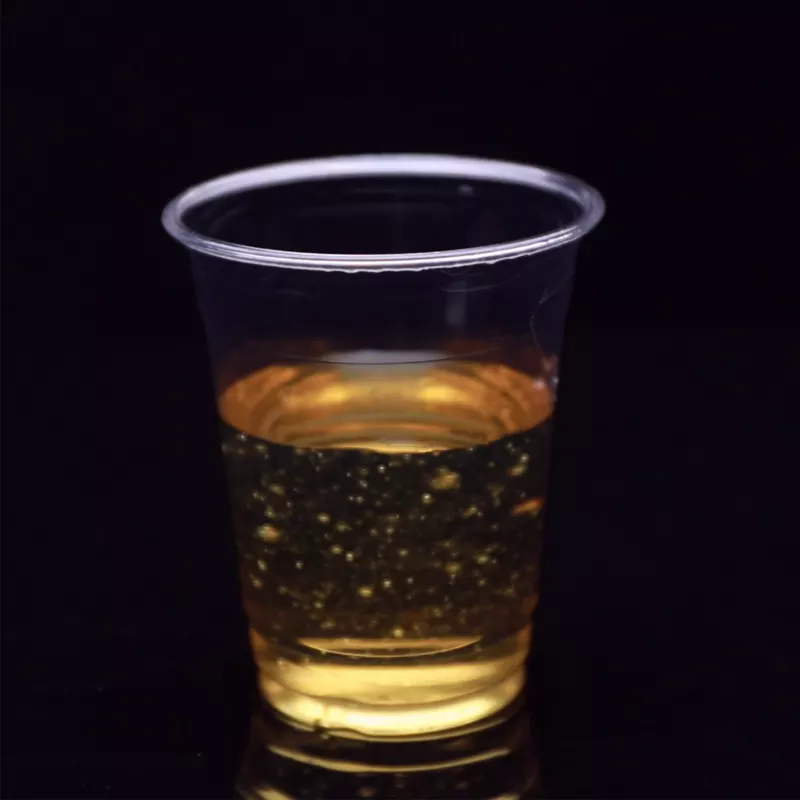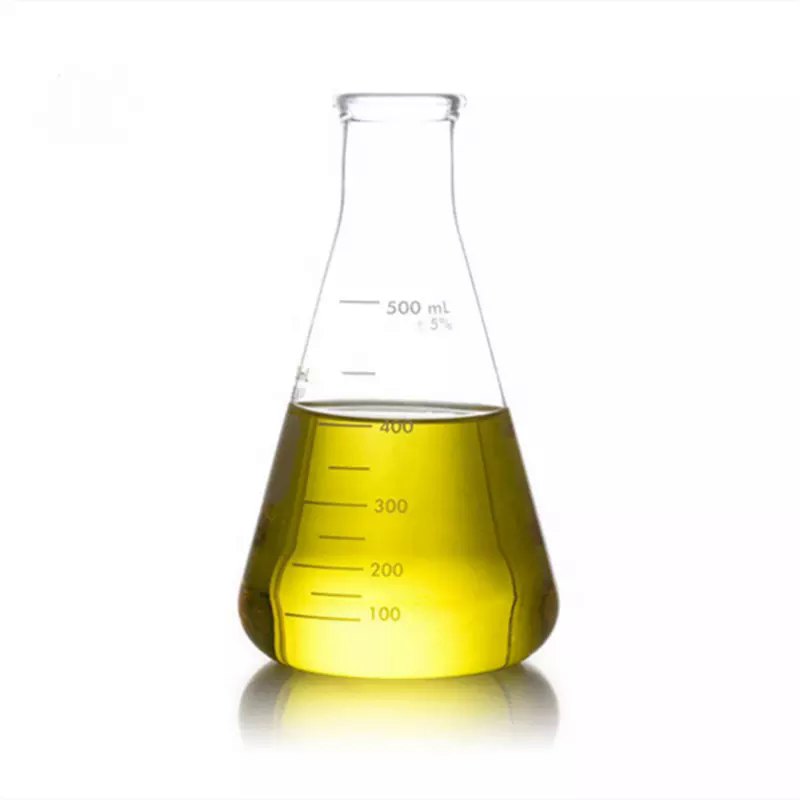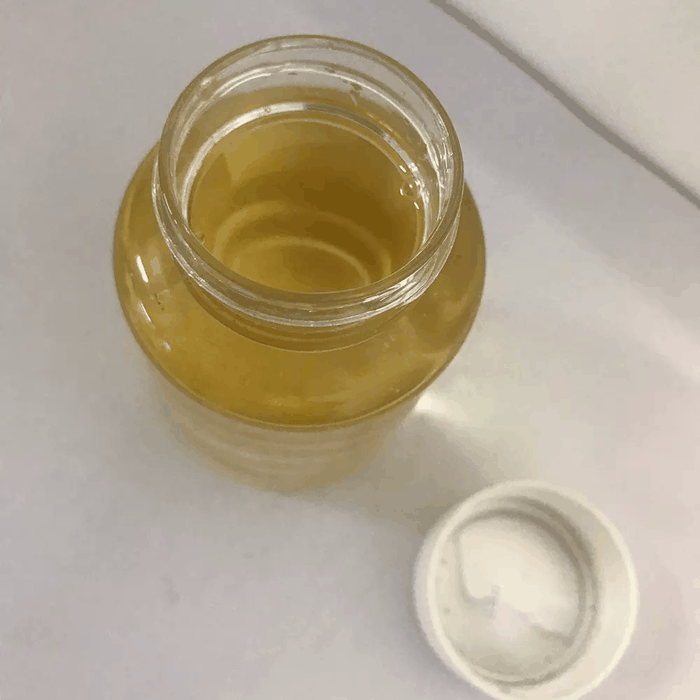PEANUT OIL
- CAS NO.:8002-03-7
- Empirical Formula: N/A
- Molecular Weight: 0
- MDL number: MFCD00131805
- EINECS: 232-296-4
- SAFETY DATA SHEET (SDS)
- Update Date: 2025-12-17 09:49:58
What is PEANUT OIL?
Chemical properties
clear yellowish viscous liquid
Chemical properties
Peanut oil is a colorless or pale yellow-colored liquid that has a faint nutty odor and a bland, nutty taste. At about 3°C it becomes cloudy, and at lower temperatures it partially solidifies.
The Uses of PEANUT OIL
peanut oil is utilized as a skin softener, emulsifier, and emollient. It can also be used as a substitute for more expensive oils such as almond and olive in cosmetic creams. Peanut oil has a higher vitamin A, vitamin e, and nicotinic acid content than other nut oils. It is obtained by pressing the seed kernels.
The Uses of PEANUT OIL
Pharmaceutic aid (solvent).
The Uses of PEANUT OIL
arachis oil (peanut oil) is a carrier oil used in cosmetic products designed for sensitive and delicate skin.
The Uses of PEANUT OIL
Peanut Oil is the oil obtained from peanuts, consisting principally of the unsaturated fatty acids oleic and linoleic. it is liquid at room tem- perature, has a specific gravity at 38°c of approximately 1.89–0.90, and an iodine number of 85–95. it is removed from the nuts by one of two processes, namely, the expeller method, in which the shelled peanuts are cooked with steam, and fed into an expeller press which physically presses the oil from the meal; or the pre-press solvent sys- tem, which is comparable to the expeller method except that less pressure is applied, which leaves more oil in the meal, and the remain- ing meal is solvent-washed, usually with hexane, to dissolve the oil from the meal. the obtained crude oil is refined. the major use of peanut oil is in cooking oils and salad oils. peanut oil is used in deep- fat frying because of its long frying life and high smoke point. in salad oil, it contributes to the suspension of solids. other applications include shortening ingredient for doughnuts and cakes.
What are the applications of Application
Peanut oil is used for the delivery of lipophilic compounds.
Production Methods
Refined peanut oil is obtained from the seeds of Arachis hypogaea Linne′ (Fam. Leguminosae). The seeds are separated from the peanut shells and are expressed in a powerful hydraulic press. The crude oil has a light yellow to light brown color, and is then purified to make it suitable for food or pharmaceutical purposes. A suitable antioxidant may be added.
Definition
Extractives and their physically modified derivatives. It consists primarily of the glycerides of the fatty acids arachidic, behenic, lignoceric, linoleic, oleic, palmitic and stearic.
General Description
Pale yellow oily liquid with a weak odor of peanuts. Floats on water. Contains principally glycerides of oleic and linoleic acids.
Air & Water Reactions
Insoluble in water.
Reactivity Profile
PEANUT OIL react with acids to liberate heat. Heat is also generated by interaction with caustic solutions. Strong oxidizing acids may cause a vigorous reaction that is sufficiently exothermic to ignite the reaction products. Flammable hydrogen is generated by mixing with alkali metals and hydrides. React slowly with oxygen in the air to become rancid.
Health Hazard
None-is a food.
Pharmaceutical Applications
Peanut oil is used as an excipient in pharmaceutical formulations
primarily as a solvent for sustained-release intramuscular injections.
It is also used as a vehicle for topical preparations and as a solvent
for vitamins and hormones. In addition, it has been part of
sustained-release bead formulations,nasal drug delivery systems,and controlled-release injectables.
Therapeutically, emulsions containing peanut oil have been used
in nutrition regimens, in enemas as a fecal softener, and in otic drops
to soften ear wax. It is also administered orally, usually with
sorbitol, as a gall bladder evacuant prior to cholecystography.
Peanut oil is also widely used as an edible oil.
Biochem/physiol Actions
Peanut oil (20% in the diet) reduces plasma total cholesterol, low-density lipoprotein cholesterol without affecting high-density cholesterol in the plasma when fed to male Syrian golden hamsters at 12 weeks after feeding . Peanut oil feeding also retards the increase in aortic total cholesterol and cholesteryl ester, suggesting that peanut oil delays the development of atherosclerosis in animals consuming an atherosclerosis inducing diet.
Safety Profile
A human skin irritant and mild allergen. Questionable carcinogen with experimental tumorigenic data. Mutation data reported. Combustible when exposed to heat or flame; can react with oxidizing materials. Slight spontaneous heating. To fight fire, use CO2, dry chemical. When heated to decomposition it emits acrid smoke and irritating fumes
Safety
Peanut oil is mildly laxative at a dosage of 15–60mL orally or of
100–500mL rectally as an enema.
Adverse reactions to peanut oil in foods and pharmaceutical
formulations have been reported extensively.These include
severe allergic skin rashes and anaphylactic shock following
consumption of peanut butter.Some workers have suggested
that the use in infancy of preparations containing peanut oil,
including infant formula and topical preparations, is associated
with sensitization to peanut, with a subsequent risk of hypersensitivity
reactions, and that such products should therefore be avoided
or banned.However, the role of pharmaceutical preparations
in later development of hypersensitivity is disputed since such
preparations contain highly refined peanut oil that should not
contain the proteins associated with allergic reactions in susceptible
individuals.
Peanut oil is harmful if administered intravenously and it should
not be used in such formulations.
Storage
Peanut oil is an essentially stable material.However on exposure
to air it can slowly thicken and may become rancid. Solidified
peanut oil should be completely melted and mixed before use.
Peanut oil may be sterilized by aseptic filtration or by dry heat, for
example, by maintaining it at 150°C for 1 hour.
Peanut oil should be stored in a well-filled, airtight, lightresistant
container, at a temperature not exceeding 40°C. Material
intended for use in parenteral dosage forms should be stored in a
glass container.
Incompatibilities
Peanut oil may be saponified by alkali hydroxides.
Regulatory Status
Included in the FDA Inactive Ingredients Database (IM injections, topical preparations, oral capsules, and vaginal emulsions). Included in parenteral and nonparenteral medicines licensed in the UK. Included in the Canadian List of Acceptable Non-medicinal Ingredients.
Properties of PEANUT OIL
| Density | 0.91 g/mL at 25 °C(lit.) |
| refractive index | n |
| Flash point: | 283 °C |
| storage temp. | 2-8°C |
| solubility | Very slightly soluble in ethanol (95%); soluble in
benzene, carbon tetrachloride, and oils; miscible with carbon
disulfide, chloroform, ether, and hexane. |
| form | Viscous Liquid |
| color | Clear yellow |
| Odor | nutty odor |
| EPA Substance Registry System | Peanut oil (8002-03-7) |
Safety information for PEANUT OIL
Computed Descriptors for PEANUT OIL
PEANUT OIL manufacturer
New Products
4,4-Difluoropiperidine hydrochloride tert-butyl 9-methoxy-3-azaspiro[5.5]undecane-3-carboxylate Indole Methyl Resin N-Isopropylurea N,N-Dicyclohexylcarbodiimide(DCC) MELDRUMS ACID 5-METHYLISOXAZOLE-4-CARBOXYLIC ACID Magnessium Bis glycinate Zinc ascorbate 1-bromo-2-butyne 2-acetamidophenol 9(10H)-anthracenone Erythrosin B, 4-Piperidinopiperidine 2-((4-morpholinophenylamino) (methylthio) methylene) malononitrile 2,4-dihydroxybenzaldehyde 3-(4-morpholinophenylamino)-5-amino-1H-pyrazole-4-carbonitrile Methyl 2-methylquinoline-6-carboxylate 2,6-dichloro-4-nitropyridine 4-Bromo-2-chlorobenzonitrile 2-(benzylamino)acetic acid hydrochloride 4-(tert-Butoxycarbonylamino)but- 2-ynoic acid 3,4-dihydro-2H-benzo[b][1,4]dioxepine 1-Phenyl-1-cycloprppanecarboxylicacidRelated products of tetrahydrofuran








You may like
-
 Arachis Oil 99%View Details
Arachis Oil 99%View Details -
 8002-03-7 99%View Details
8002-03-7 99%View Details
8002-03-7 -
 Peanut oil 98%View Details
Peanut oil 98%View Details
8002-03-7 -
 Peanut oil, delivery vehicle for lipophilic compounds CAS 8002-03-7View Details
Peanut oil, delivery vehicle for lipophilic compounds CAS 8002-03-7View Details
8002-03-7 -
 Peanut oil, analytical standard CAS 8002-03-7View Details
Peanut oil, analytical standard CAS 8002-03-7View Details
8002-03-7 -
 Peanut Oil CAS 8002-03-7View Details
Peanut Oil CAS 8002-03-7View Details
8002-03-7 -
 20677-73-0 (2,2-diethoxyethyl)methylamine 98%View Details
20677-73-0 (2,2-diethoxyethyl)methylamine 98%View Details
20677-73-0 -
 3-(4-(hydroxyamino)-1-oxoisoindolin-2-yl)piperidine-2,6-dione 98%View Details
3-(4-(hydroxyamino)-1-oxoisoindolin-2-yl)piperidine-2,6-dione 98%View Details
